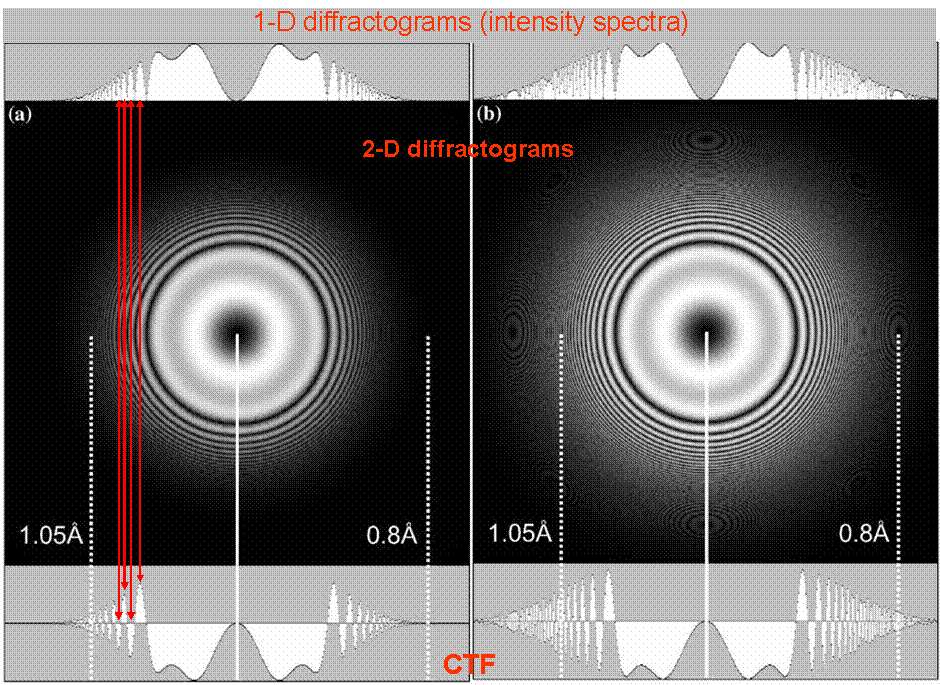=================================================================================
Borrowing the concept from X-ray diffraction, the electron diffractogram in TEM is the diffracted intensity I as a function of either the scattering angle θ or the scattering vector q. Diffractogram sometimes is also called one dimensional (1-D) diffractogram, while a diffraction pattern is occasionally called two dimensional (2-D) diffractogram. Therefore, in some cases, the Fourier transform of the image intensity distribution can also called the diffractogram of the image, e.g. see here.
As an example, Figures 4170 (a) and (b) shows CTFs and diffractograms obtained based on two different TEM systems.

Figure 4170. (a) and (b) CTFs and diffractograms obtained based on two different TEM systems [1].
Information limit for HRTEMs is the inverse of the maximum spatial object frequency. The information limit is often obtained from measurements of diffractogram or from Young’s fringes provided a weak phase object scattering beyond the inverse of the information limit. Note that for the weak phase object approximation the diffractogram obtained using EFG-TEMs is the same as that using a CTEM based on W (tungsten) or LaB6 electron guns.
Furthermore, the methods for determining the aberrations can be generally categorized by two groups based on either measuring image shifts when the illumination is tilted or diffractograms of amorphous materials.
[1] M. A. O’Keefe, C. J. D. Hetherington, Y. C. Wang, E. C. Nelson, J.H. Turner, C. Kisielowski, J. -O. Malm, R. Mueller, J. Ringnalda, M. Pane, and A. Thust, Sub-Ångstrom high-resolution transmission electron microscopy at 300 keV, Ultramicroscopy 89 (2001) 215–241.
|
